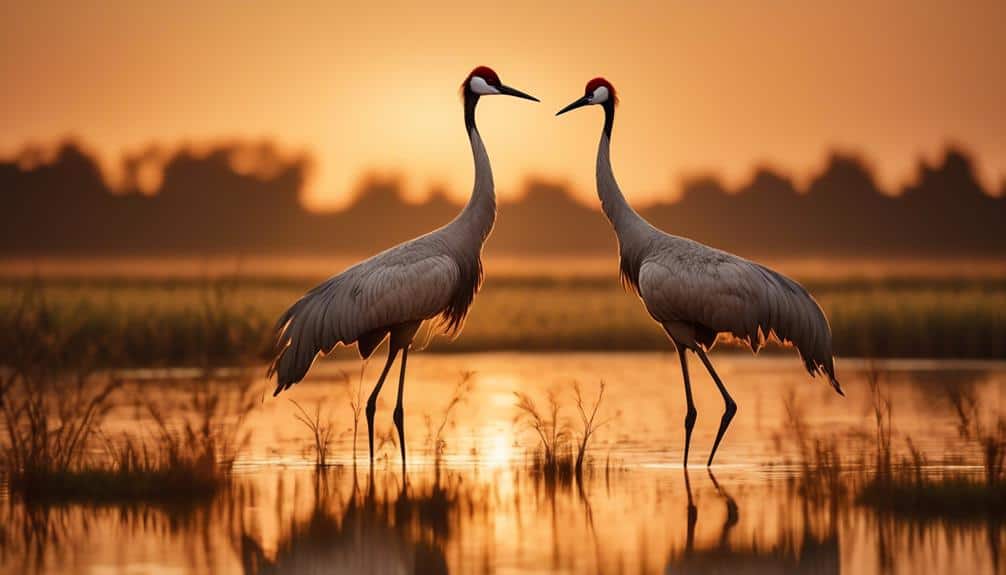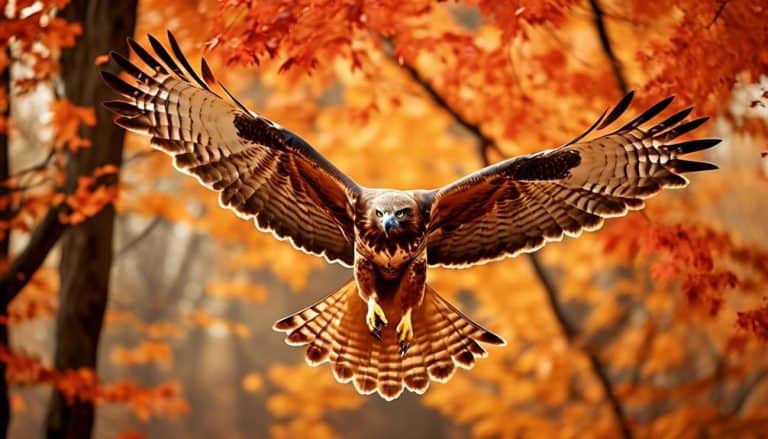As I sit here, the world of long neck birds unfolds before me like a vibrant tapestry, each thread representing a unique and fascinating species. From the elegant swans gracefully gliding across the water to the quirky flamingos standing on one leg, these birds never cease to captivate.
With their slender necks reaching towards the sky, they exude a sense of grace and curiosity that is unmatched in the avian kingdom. However, there is still so much more to discover about these majestic creatures, and in the following paragraphs, we will explore the captivating world of long neck birds and uncover the secrets that lie within.
Elegant Swans

Elegant Swans, with their graceful long necks and regal posture, are a captivating sight in both natural habitats and man-made environments. These majestic creatures belong to the family Anatidae and are known scientifically as Cygnus. With their elegant ballet-like movements, swans glide effortlessly across the water, captivating onlookers with their grace and beauty.
Swans are characterized by their long, slender necks, which allow them to reach deep into the water in search of food. Their necks are highly flexible, enabling them to twist and turn with remarkable agility. This flexibility also aids in their courtship displays, where they engage in a graceful ballet of synchronized movements.
In addition to their necks, swans possess other physical features that contribute to their elegance. Their feathers are soft and velvety, providing insulation and buoyancy in the water. Their wings are powerful and enable them to take flight, adding to their majestic presence.
Swans are commonly found in lakes, ponds, and rivers, where they gracefully navigate the water in search of aquatic vegetation and small invertebrates. They're also frequently seen in man-made environments such as parks and gardens, where their presence adds a touch of natural beauty.
Quirky Flamingos

What unique characteristics make flamingos stand out among other long-necked birds?
Flamingos are fascinating creatures with a range of quirky behaviors and adaptations that set them apart. One of the most intriguing aspects of flamingos is their elaborate mating rituals. These rituals involve synchronized displays of wing flapping, head bobbing, and vocalizations, all performed in unison by a group of flamingos. These captivating displays not only serve as courtship rituals but also strengthen social bonds within the flamingo colony.
Flamingos are also known for their distinctive pink plumage, which is a result of their diet rich in algae and brine shrimp. Their long, slender necks and legs allow them to wade in shallow waters, where they use their specialized bills to filter-feed on small organisms. This unique feeding behavior is crucial for their survival and plays a vital role in maintaining the delicate balance of their ecosystem.
In recent years, there have been significant conservation efforts focused on protecting flamingo populations and their habitats. These efforts include the establishment of protected areas, monitoring and research programs, and public awareness campaigns. By raising awareness about the importance of flamingos and their ecosystems, these conservation initiatives aim to ensure the long-term survival of these quirky and charismatic birds.
Graceful Herons

Herons, with their long, graceful necks and elegant plumage, are renowned for their exceptional hunting skills and ability to navigate diverse habitats. These graceful birds have unique feeding habits and intriguing breeding behaviors that set them apart from other avian species.
When it comes to feeding, herons employ a variety of techniques to catch their prey. One of their most notable strategies is known as 'stalking.' With their slender bodies and sharp beaks, herons patiently stand still in shallow waters, waiting for an opportune moment to strike. Once their target comes within reach, they swiftly extend their necks, using their sharp beaks to snatch fish, frogs, and other aquatic creatures. This hunting technique requires precision and agility, showcasing the heron's exceptional skills as a predator.
In terms of breeding behaviors, herons exhibit fascinating rituals. During the mating season, these birds form large colonies known as 'heronries.' Male herons engage in elaborate courtship displays, showcasing their plumage and performing aerial acrobatics to attract a mate. Once a pair is formed, they construct a nest using twigs and branches in tall trees or shrubs near water bodies. The female lays a clutch of eggs, and both parents take turns incubating them. This cooperative breeding behavior highlights the heron's commitment to ensuring the survival of their offspring.
Majestic Cranes

With their long, slender bodies and graceful movements, cranes are captivating birds that share some similarities with herons in their hunting techniques and breeding habits. Cranes are known for their elaborate courtship displays, where they jump, bow, and flap their wings in synchronized movements. These displays aren't only a way to attract a mate but also to establish dominance and maintain territory.
Cranes exhibit complex behavior patterns throughout their lives. They're highly social birds, often found in large flocks or family groups. Cranes communicate through a variety of vocalizations, including bugling calls, trumpeting, and soft purring sounds. These vocalizations serve to maintain group cohesion, establish territory, and warn of potential threats.
Conservation efforts are crucial to ensure the survival of crane populations worldwide. Several species of cranes are classified as endangered or vulnerable due to habitat loss, pollution, and illegal hunting. Organizations and governments are working tirelessly to protect crane habitats, establish protected areas, and implement strict regulations to prevent the illegal trade of cranes and their eggs.
Colorful Pelicans

Colorful pelicans, with their vibrant plumage and distinctive beaks, are fascinating birds that captivate both scientists and nature enthusiasts alike. These birds are known for their striking colors, which play a crucial role in their natural habitat. Pelicans are sociable creatures and are often found in large groups, known as colonies, where they engage in various behaviors. These include cooperative hunting, where they work together to surround and catch fish. Pelicans also engage in courtship displays, which involve elaborate dances and vocalizations to attract mates.
The ecological importance of colorful plumage in pelicans can't be overstated. The bright colors serve multiple purposes. Firstly, they act as a visual signal to potential mates, indicating the individual's health and genetic fitness. This is particularly important during courtship displays, where the brightest and most vibrant individuals are more likely to attract a mate. Additionally, the colors also serve as a form of camouflage. When pelicans are in their natural habitat, such as wetlands and coastal areas, their colorful plumage helps them blend in with their surroundings, making it easier for them to approach prey without being detected.
Curious Egrets

Egrets, known for their slender bodies and graceful movements, are captivating birds that pique the curiosity of both researchers and nature enthusiasts. These elegant creatures exhibit fascinating behavior and inhabit diverse habitats around the world.
In terms of behavior, egrets are known for their curious nature. They often engage in inquisitive actions, such as tilting their heads and observing their surroundings with keen interest. This behavior allows them to spot potential prey, which mainly consists of fish, amphibians, and small invertebrates. Egrets are patient hunters, often waiting motionless for long periods before striking with lightning-fast precision.
When it comes to habitat, egrets are incredibly adaptable birds. They can be found in various environments, including wetlands, marshes, rivers, and even coastal areas. These birds prefer habitats with shallow water, as it provides them with easy access to their preferred food sources. Additionally, egrets often nest in colonies, known as heronries, which are located in trees near water bodies.
To further understand the behavior and habitat preferences of egrets, let's take a closer look at the following table:
| Behavior | Habitat |
|---|---|
| Curiosity | Wetlands |
| Patient hunting | Marshes |
| Observing surroundings | Rivers |
| Prey selection | Coastal areas |
| Nesting in colonies | Heronries near water |
Through their curious behavior and adaptability to various habitats, egrets continue to captivate the interest of researchers and nature enthusiasts alike.
Frequently Asked Questions
What Is the Average Lifespan of Elegant Swans?
The average lifespan of elegant swans is around 10 to 12 years. These majestic birds are known for their graceful long necks and can be found in various habitats across the world.
How Do Quirky Flamingos Obtain Their Vibrant Pink Color?
Flamingos' unique pink color is derived from their diet, which consists of organisms rich in carotenoids. As for elegant swans, their average lifespan can vary due to factors such as habitat, predation, and disease.
Do Graceful Herons Migrate to Different Locations During Certain Seasons?
Graceful herons float through the sky like ethereal dancers, their long necks stretched out gracefully. These majestic creatures migrate to different locations during certain seasons, following intricate patterns that scientists are still unraveling.
Are Majestic Cranes Known for Their Elaborate Mating Dances?
Yes, majestic cranes are known for their elaborate mating dances. These intricate performances involve synchronized movements, calls, and displays of their beautiful plumage, all designed to attract a mate and ensure successful reproduction.
What Is the Diet of Colorful Pelicans and Curious Egrets?
Colorful pelicans and curious egrets have a diverse diet. They primarily consume fish, but also eat amphibians, crustaceans, and small mammals. These feeding habits are characteristic of long-necked birds, providing them with essential nutrients for survival.
Conclusion
In conclusion, the world of long neck birds is a fascinating one, filled with elegance, quirkiness, and grace.
From the elegant swans gliding effortlessly on the water, to the quirky flamingos with their vibrant plumage, each species has its own unique charm.
The graceful herons, majestic cranes, colorful pelicans, and curious egrets add to the captivating tapestry of nature.
Their long necks serve as a testament to their adaptability and survival in various habitats.
The wonders of these long neck birds continue to captivate and intrigue us, leaving us eager to explore more of their captivating world.







